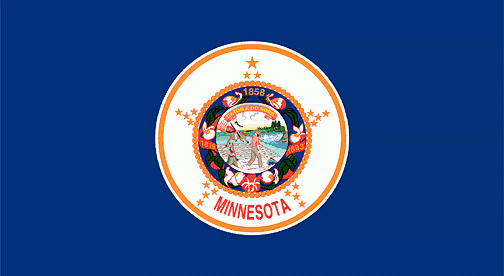When Minneapolis and St. Paul Battled over Population

Minneapolis and St. Paul, respectively, are the largest city and capital of the state of Minnesota. Together, they’re often referred to as the “Twin Cities” because they border one another — even the local baseball team (the Minnesota Twins) adopts the moniker. But St. Paul and Minneapolis are two distinct cities — different mayors, different local ordinances, and even different architectural influences. They’re twins geographically, but, let’s say, they’re fraternal, not identical.
And like any other siblings, sometimes they fight. Sometimes those arguments are over ridiculous disagreements. And sometimes the battles fall out of control. Like the time they kidnapped one another’s officials.
As of the most recent U.S. census (2010), Minneapolis is home to about 380,000 people while St. Paul has about 285,000 residents. But Minneapolis wasn’t always so much larger than its twin. In 1860, just a few years after Minnesota became a state, St. Paul had 10,000 residents to Minneapolis’s 5,000. But in 1872, Minneapolis annexed the neighboring city of St. Anthony, and by the 1880 census, things were different. St. Paul had grown to 41,000 residents — it had quadrupled its population over the twenty-year period — but Minneapolis was growing faster. With nearly 47,000 people living there, Minneapolis was in the lead.
Suddenly, the supremacy of St. Paul — even though it was the state’s capital — was in question. Population was booming in the region and from 1880 to 1890 and both cities saw immense growth. Which of the Twin Cities had more people became a point of pride for residents of both, and both cities’ efforts to be the bigger twin involved attracting more residents. But instead of stopping there, both sides tried to manipulate the 1890 census.
How? By padding the vote totals and, to ensure that the other side didn’t do the same, by arresting the other side’s census takers.
The New York Times started covering the imbroglio in June of 1890. On the 21st of that month, the Times reported that St. Paul had issued arrest warrants for seven Minneapolis “census enumerators,” alleging that the people counters had engaged in fraud while tallying Minneapolis’s population. Minneapolis was less than pleased and the rhetoric around the question became heated, as the Times noted: “every little point in the history of the case has been greatly magnified and the consequent indignation at what was considered improper and outrageous interference in Minneapolis affairs by the city of St. Paul has been intensified.” In other words, everyone in Minneapolis was really, really angry at their neighbors.
And it was going to get worse. The next day, the Times reported that St. Paul’s people had a reason to be upset as well — the U.S. District Attorney, Mr. Hay (his first name isn’t reported), decided not to prosecute the seven accused census takers. Hay claimed that he simply didn’t have the budget to bring an action against them (“I have no money to defray the cost of prosecution,” he said) and wrote to the U.S. Attorney General (his boss, nominally) to seek guidance. St. Paulites saw a different reason — Hay, they noted, was a “loyal” (per the Times) resident of Minneapolis. The mayor of St. Paul, R.A. Smith, and about 200 other prominent members of his city went to the Mr. Hay’s office in protest; the Times reported that Hay simply “dismiss[ed] the delegation with a wave of his hand” and left for home. Neither side dropped the issue. But St. Paul wasn’t done. Per another Times report, St. Paul arrested another Minneapolis official, and Minneapolis arrested a St. Paul investigator in response.
Ultimately, it turned out that St. Paul officials were correct — Minneapolis was over-counting, often considering those buried in cemeteries to be “residents” of Minneapolis. But St. Paul was no saint — it, too, was engaged in similar population-padding methods, as one regional blog notes. The Federal government threw out the results of the city-run census and ordered a recount, one run by Federal officials. Minneapolis came in with 164,738 to St. Paul’s 133,156.
Bonus Fact: In 1965, Minneapolis and St. Paul had another ridiculous disagreement — they couldn’t decide what time it was. The Federal government decreed that Daylight Saving Time would begin on May 9th of that year, but for various reasons, the Minnesota state legislature decided that May 23rd suited their purposes better. Minneapolis joined the rest of the state and turned its clocks forward on the 23rd, but St. Paul went with the rest of the nation and opted for May 9th. For two weeks, the Twin Cities were an hour apart.
From the Archives: Targeting Crime: One of the world’s greatest crime labs is in Minneapolis. But it’s not run by the police department of FBI. It’s owned by Target.
Take the Quiz: Name the Biggest Non-Twin Cities in Minnesota. (Okay, some aren’t “cities.”)
Related: “How to Talk Minnesotan” by Richard Mohr. “Revised for the 21st century,” apparently. 4.4 stars on a handful of reviews and moderately funny, according to reviews.
